Try these 32 healthy dessert ideas, for when you're after a nutritious sweet treat
These healthy dessert ideas are proof you needn't go without on a nourishing, balanced diet...


The concept of healthy dessert ideas may surprise you. After all, we've been taught to view sweet dishes as something indulgent and not conducive to a nourishing, balanced diet. However, it is possible to enjoy a sweet fix while meeting your nutrition goals - as long as you know what to look for.
Indeed, desserts can be made healthier by swapping in nutrient-dense ingredients, such as using whole grain flour for a crumble or mixing in grated veggies into your brownies. An easy win, particularly if you are considering how to lose weight without dieting, is to load up on fruit - which can be enjoyed in a number of delicious ways.
What's more, you can use your dessert as an opportunity to incorporate more gut-friendly and high-fibre foods into your meals. It's still important to enjoy such delights in moderation - but if you're after something sweet to top of your meal that also packs a feel-good punch, then look no further...
32 healthy dessert ideas
1. Dark chocolate

Dark chocolate can be a healthy dessert option, that is also lower in sugar than milk varieties. This is partly thanks to its rich cocoa content - look for 70% or more on the label - which comes packed with antioxidants such as flavonoids, and there's evidence that these compounds help reduce inflammation and improve heart health by lowering blood pressure and increasing blood flow to the brain and heart. It also contains minerals like iron, magnesium and zinc.
2. Protein pancakes

For a sweet treat that serves up extra benefits, try protein pancakes. The high protein content - from protein powder - supports muscle repair and growth, and they are typically also made with ingredients like eggs and whole grain flour, providing essential nutrients such as fibre, vitamins and minerals. Unlike traditional desserts, they can help stabilise blood sugar levels by serving up a balanced mix of carbohydrates and protein.
3. Chia seed pudding

Chia seeds are filled with nutrients such as fibre, protein, omega-3 fatty acids and antioxidants. They help promote digestive health, support heart health by lowering cholesterol levels and provide sustained energy due to their high fibre content. Use them for chia seed pudding, which can be prepared with plant-based milk and natural sweeteners like honey or maple syrup, keeping the overall sugar content down compared to traditional desserts.
4. Strawberries and cream

The traditional summer sweet treat can make a healthy dessert all year round. Strawberries are low in calories and packed with vitamins, minerals and antioxidants such as vitamin C and polyphenols. They contribute to heart health, help regulate blood sugar levels and support immune function. Meanwhile, the addition of cream can provide an extra dose of calcium and healthy fats.
Sign up to our free daily email for the latest royal and entertainment news, interesting opinion, expert advice on styling and beauty trends, and no-nonsense guides to the health and wellness questions you want answered.
5. Fruit salad

A fruit salad makes a classic healthy dessert, particularly during warmer weather when it can be a light and refreshing option that is high in fibre but low in calories. The best bit is that it can be customised depending on personal preferences - add in berries, melons and citrus fruits to provide essential nutrients such as vitamin C, potassium, and folate, which support overall health and immune function.
6. Sorbet

Sorbet is generally made with fruit puree or juice, water and a small amount of sweetener. It is naturally fat-free and lower in calories compared to ice cream or gelato and is also free from dairy - making it suitable for those with lactose intolerance or dairy allergies. What's more, it retains the vitamins, minerals and antioxidants present in the fruits used to make it, providing a nutritional boost.
7. Fruit and nut flapjack
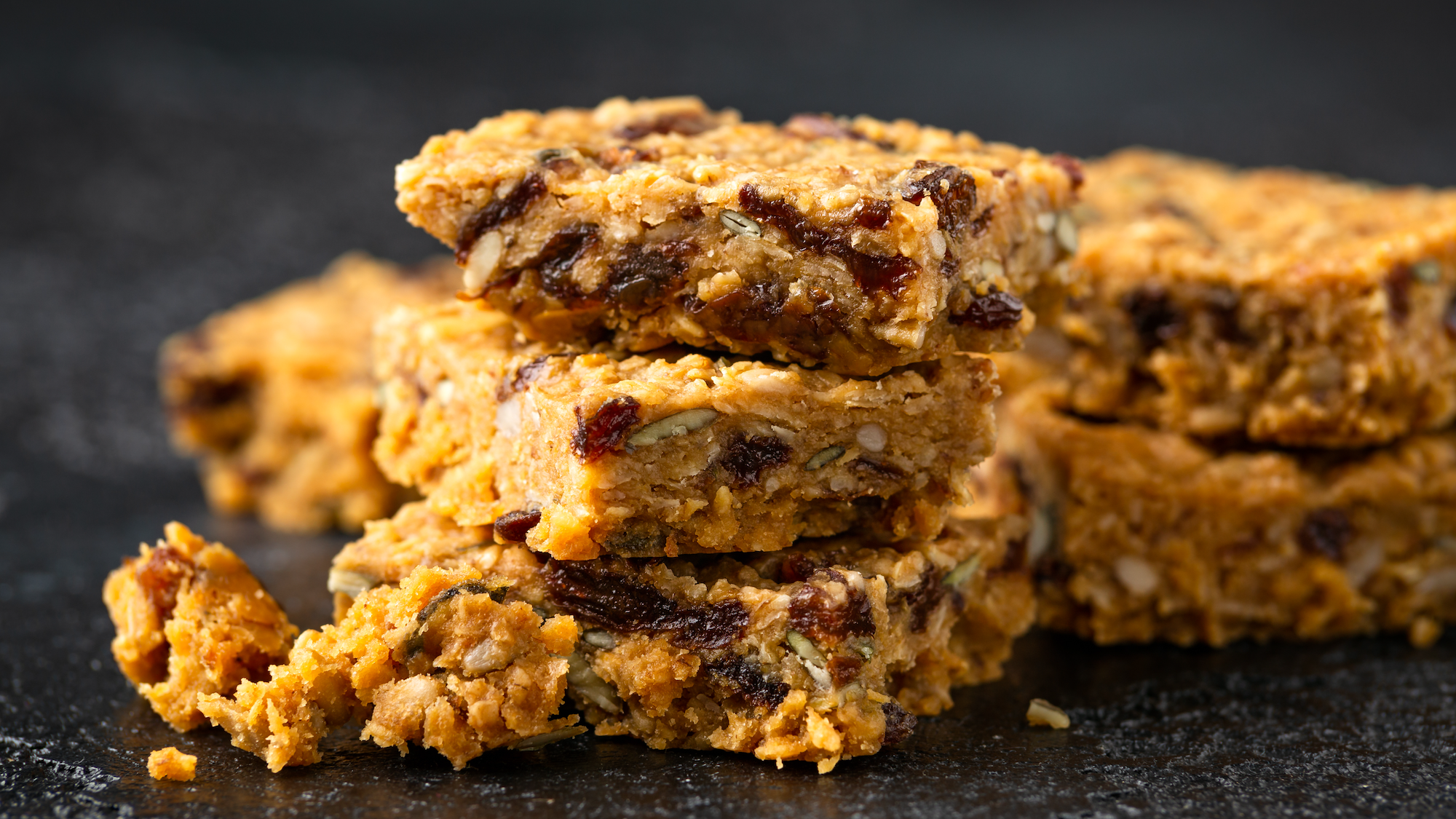
When consumed in moderation, fruit and nut flapjack can be a healthier dessert option. Oats are rich in fibre, which aids digestion, helps maintain steady blood sugar levels and provides complex carbohydrates for sustained energy. Meanwhile, dried fruits add natural sweetness and essential vitamins and minerals, while nuts contribute healthy fats, protein and additional nutrients like vitamin E and magnesium.
8. Raspberry crumble

Raspberry crumble can be a healthy dessert option when made with whole ingredients like whole grain flour - which is a more nutritious alternative to refined flour - oats, fresh raspberries and minimal added sugars. The fruit is low in calories, but rich in fibre, vitamin C, and antioxidants, which support immune function and overall health. Additionally, the oats provide complex carbohydrates and additional fibre, aiding digestion and helping to regulate blood sugar levels.
9. Granola bar
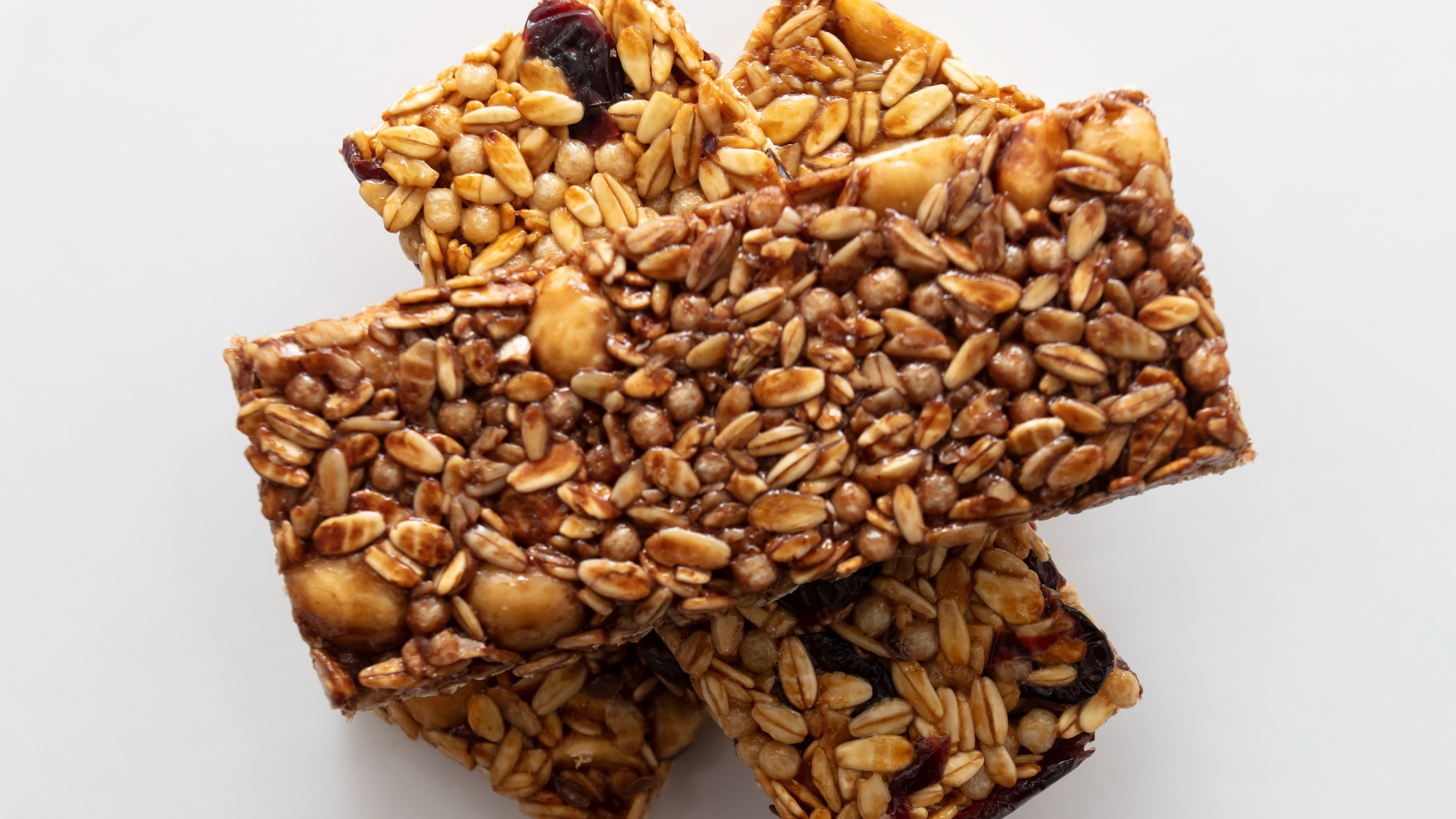
This is a healthy on-the-go dessert option if you opt for granola bars that are lower in calories and sugar content where possible. Whole grains, like oats, offer complex carbohydrates that provide sustained energy and aid in digestion. Similarly, they also often have nuts and seeds, which contain healthy fats, protein, and additional nutrients like omega-3 fatty acids and antioxidants. Dried fruits add natural sweetness as well as essential vitamins and minerals.
10. Cheese board

After a savoury healthy dessert? You can't go wrong with a cheese board. It is a good source of protein and calcium, essential for bone health and muscle function. It also contains healthy fats, particularly in varieties like goat cheese or aged cheeses. However, go easy on how much you slice off - portion control is important due to the calorie density.
11. Dried fruit
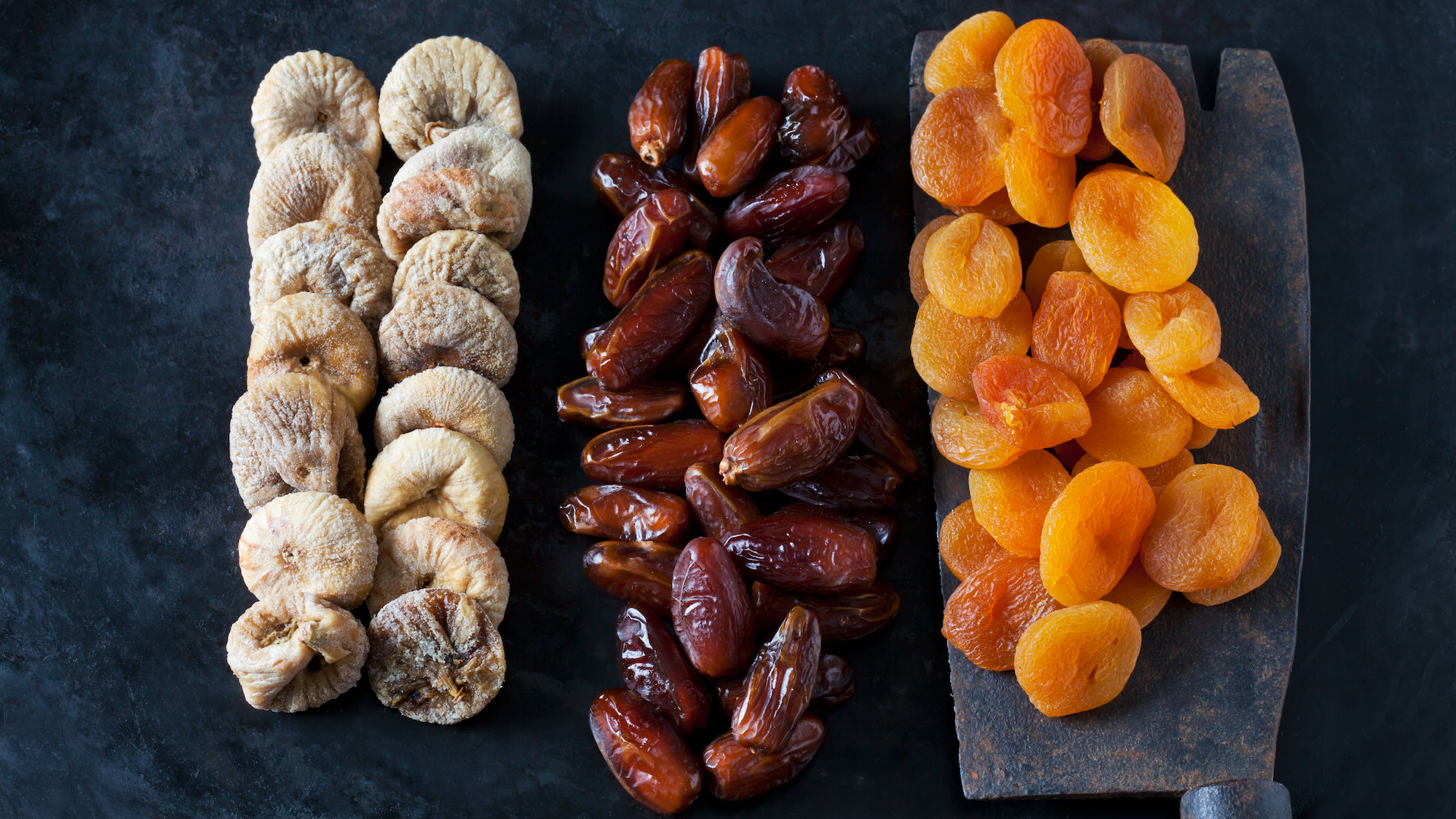
Dried fruits - like apricots, figs and dates - can make a healthy dessert choice because they are nutrient-dense and provide essential vitamins, minerals and fibre. They retain most of the nutrients found in fresh fruits - including potassium, iron and antioxidants like polyphenols. They are also naturally sweet due to their concentrated sugars, however, this also makes them calorie-dense - meaning they should be consumed in moderation.
12. Ice lolly

If you're keen to cool down, reaching for an ice lolly is a smart move. It is a relatively healthier dessert option because it can be made with natural fruit juices or purées - which provide vitamins and minerals like vitamin C and potassium. When prepared with minimal or no added sugars, they are low in calories and are also a great way to hydrate.
13. Courgette brownies

Making brownies with grated courgette added into the mix can be a clever way to boost the classic dessert's nutritional content without altering its taste or texture. The vegetable not only adds moisture and fibre, but also contributes to a lower calorie content and often requires the recipe to need less refined flour and sugar.
14. Apple slices and almond butter
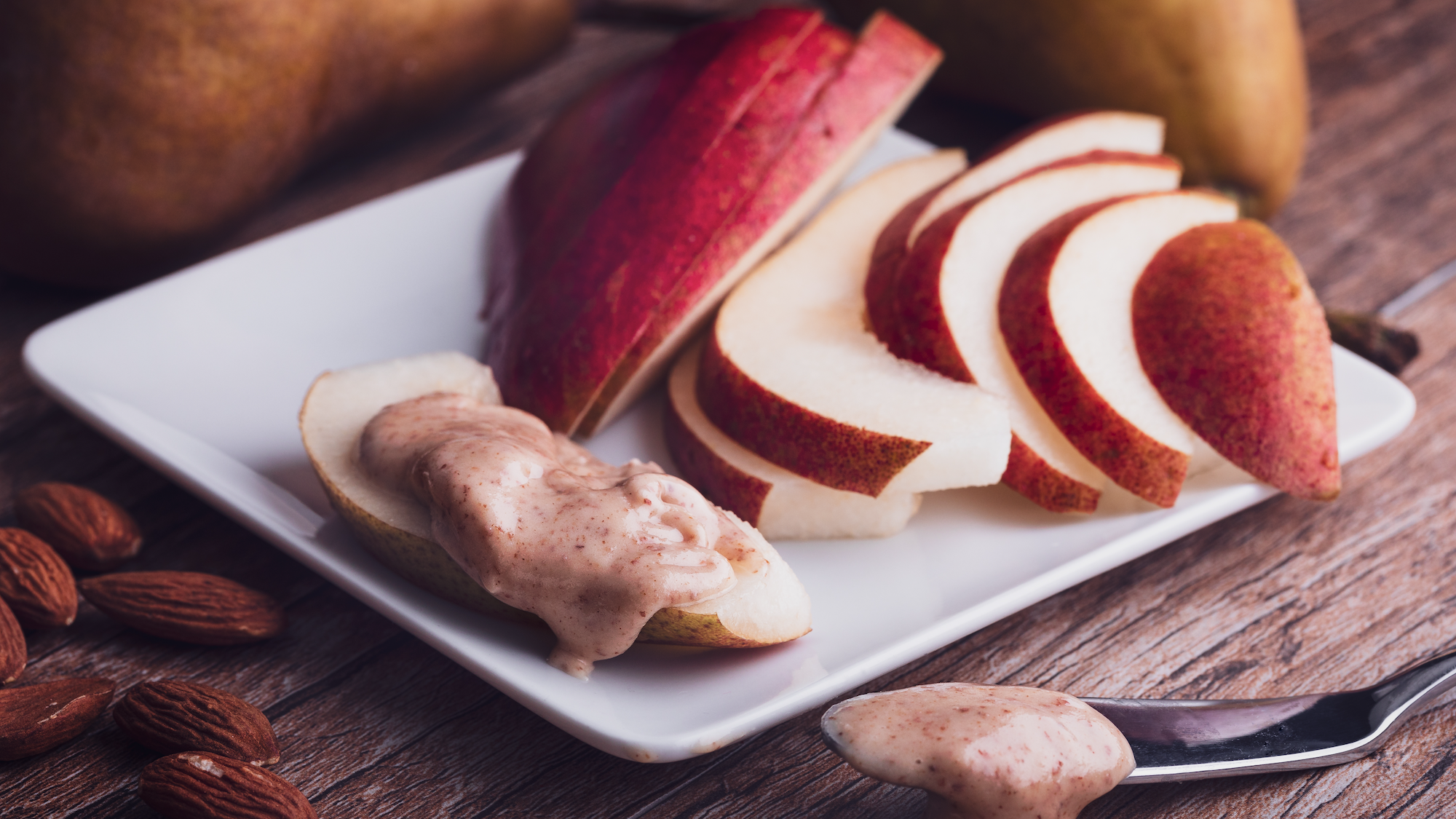
This is a healthy dessert option to enjoy on the regular. Apples are rich in fibre - particularly a soluble fibre called pectin, which supports digestive health and helps regulate blood sugar levels. Meanwhile, almond butter provides healthy fats, protein and additional fibre, promoting satiety and aiding heart health.
15. Greek yoghurt

Greek yoghurt makes an ideal dessert thanks to its high protein content, which supports muscle health and helps to keep you feeling full. It is also rich in calcium, which is important for bone health, and contains probiotics that promote gut health. Up the sweetness by topping with fresh fruits or a drizzle of honey.
16. Rice pudding

It may be an unlikely choice, but rice pudding is a great way to round off a meal. Using whole-grain rice provides complex carbohydrates that release energy slowly, helping to keep blood sugar levels stable. It also serves up fibre, which aids in digestion and promotes feelings of fullness. Top with fruits or spices like cinnamon to enhance the flavour while keeping sugar content down.
17. Carrot cake

It may feel like cheating, but carrot cake can be considered a healthier dessert option. The vegetable is rich in beta-carotene, which converts to vitamin A in the body, supporting vision and immune function. Meanwhile, using whole wheat flour provides more fibre and nutrients compared to refined flour, aiding digestion and helping to regulate blood sugar levels.
18. Popcorn

After something to munch on in the evening? Air-popped popcorn - without excessive salt or sugar added - is particularly nutritious. It provides complex carbohydrates that serve up sustained energy and aid in digestion. Stick to plain popcorn or lightly season it with herbs or spices.
19. Oatmeal cookies

Oatmeal cookies can be a healthier dessert option when made with whole-grain oats. These are rich in fibre that supports digestion and helps regulate blood sugar levels, and also provide vitamins and minerals like manganese and phosphorus. Using natural sweeteners such as honey or maple syrup instead of refined sugars reduces overall sugar content, and adding nuts or seeds increases protein and healthy fats, promoting satiety.
20. Pumpkin pie

When consumed occasionally, pumpkin pie can be a healthier dessert option due to its key ingredient - pumpkin - which is rich in vitamins A and C, fibre and antioxidants. These nutrients support immune function, eye health and digestion. What's more, while the pumpkin itself is low in calories and fat, it should be eaten in moderation due to the other ingredients.
21. Banana bread
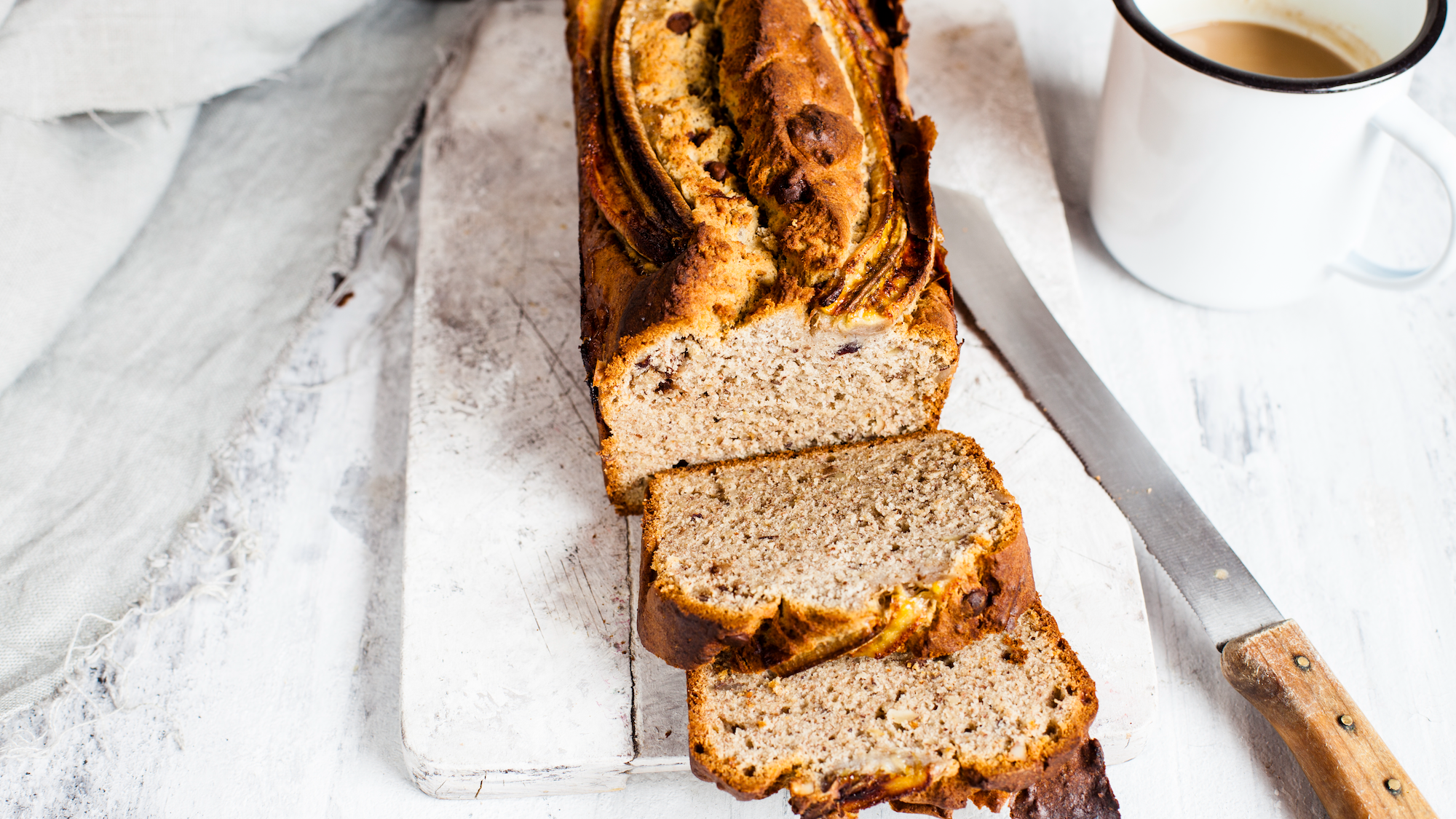
Banana bread can be a healthier dessert choice when made with ripe bananas, which are rich in potassium, vitamin C and fibre. Using whole wheat flour also contributes additional fibre and nutrients compared to refined flour, and natural sweeteners like honey or mashed bananas lower the need for refined sugars. Adding nuts or seeds also provides healthy fats and protein, which can boost satiety.
22. Vegan cookies

There are a few reasons why vegan cookies are a superior option. They can be a healthy dessert choice when made with ingredients like whole grain flour, plant-based oils or nut butter, and natural sweeteners such as maple syrup or dates. Additionally, they can incorporate ingredients like flaxseed or chia seeds for extra omega-3 fatty acids and antioxidants.
23. Energy balls

If you want a sweet fix before exercise, then munch on an energy ball. They are generally packed with nutrient-dense ingredients like nuts, seeds, oats and dried fruits, which provide fibre, healthy fats, vitamins and minerals. They are also often sweetened with natural ingredients like honey or dates, lowering the need for refined sugars - however, portion control is still important due to their calorie density.
24. Flourless chocolate cake

Flourless chocolate cake can be a healthier upgrade compared to the traditional version. The absence of flour reduces the carbohydrate content and gluten, making it suitable for those with gluten sensitivities. Additionally, dark chocolate contains antioxidants such as flavonoids, which have been associated with various health benefits including heart health and improved blood flow.
25. Stewed apples
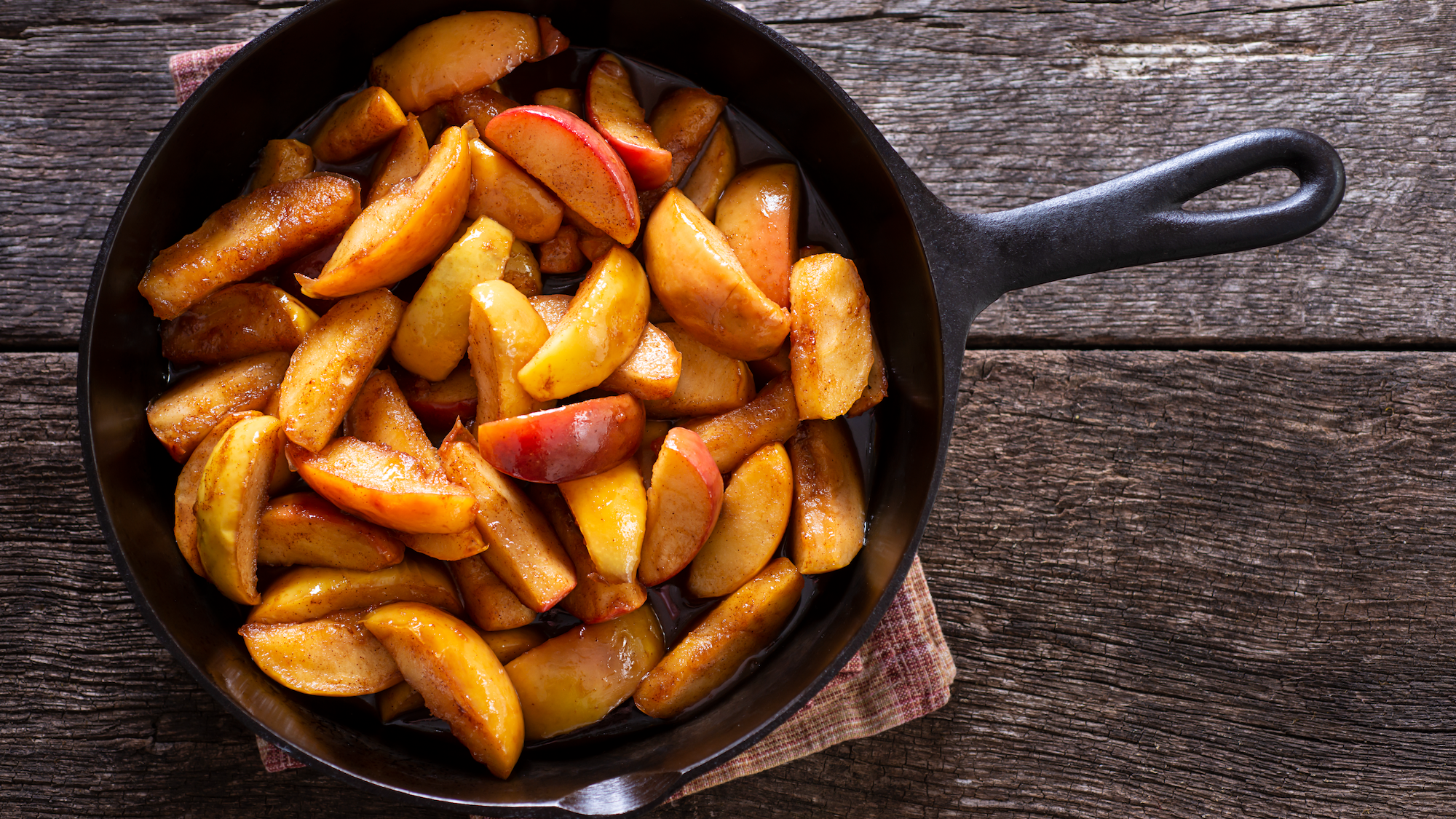
For a healthy dessert option that you can consume on the regular, try stewed apples. The fruit is rich in dietary fibre, especially soluble fibre like pectin, which aids digestion and helps regulate blood sugar levels. Stewing apples with minimally added sugars also preserves their natural sweetness while reducing the overall calorie content.
26. Froyo

Frozen yoghurt - also called 'froyo' - can be a better swap for ice cream, since it typically contains less fat and fewer calories. It is often a good source of calcium, important for bone health, and when topped with fresh fruits or nuts you can enhance the nutritional value while keeping sugar content down.
27. Yoghurt parfait

Want to mix things up a bit? Try a yoghurt parfait. The key ingredient provides protein, calcium and beneficial probiotics that support digestive health and strengthen bones. Adding fruits like berries or bananas contributes essential vitamins, minerals and antioxidants, while layering with whole grain granola or nuts contributes fibre and healthy fats, promoting satiety and steady energy levels.
28. Granola

If you want to add a sweeter element to Greek yoghurt, try topping it with granola - particularly when it's made with whole grains, nuts, seeds and dried fruits. These ingredients provide fibre, protein, healthy fats, vitamins and minerals that support overall health. However, portion control is vital due to the calorie density, and you should try to choose varieties with minimally added sugars.
29. Chocolate mousse

Chocolate mousse can be a healthy dessert option when made with dark chocolate. It contains antioxidants such as flavonoids, which have been linked to heart health benefits and improved blood flow, and it also provides iron, magnesium and other essential minerals. Additionally, using Greek yoghurt or avocado as a base can add protein and healthy fats.
30. Chocolate-dipped strawberries

After a healthy dessert option for a special occasion? Try strawberries dipped in dark chocolate. It contains antioxidants such as flavonoids that may contribute to heart health and improved blood flow, while strawberries are low in calories and rich in vitamins C and K, as well as fibre.
31. Raw cheesecake

Raw cheesecake can be a healthier option compared to the traditional version because it is typically made with ingredients like nuts, dates and natural sweeteners. Nuts - such as cashews or almonds - provide healthy fats, protein and essential nutrients like magnesium and vitamin E. Dates or other natural sweeteners reduce the need for refined sugars, thereby lowering the overall sugar content.
32. Fruit smoothie

After something sweeter to sip on the go? Fruit smoothies can be a great option when made with fresh or frozen fruits, yoghurt or milk and minimally added sugars. Fruits are rich in vitamins, minerals and antioxidants that support overall health - providing natural sweetness.

Lauren is a freelance writer and editor with a decade of print and digital journalism experience. While she specialises in covering health and wellness topics - ranging from nutrition and fitness, to women’s health conditions and mental wellbeing - she has written across a diverse range of lifestyle topics, including fashion, beauty, homes, royals and travel.
In addition to writing for Woman & Home and sister title Homes & Gardens, Lauren's work has also been published by Women’s Health, The Times, Daily Telegraph, Elle, Cosmopolitan, The Guardian, Marie Claire, Body + Soul, Stylist, Glamour, Grazia, Red, Dazed Digital, Yahoo Life, The Sun’s Fabulous, Get The Gloss and Hello! among others.